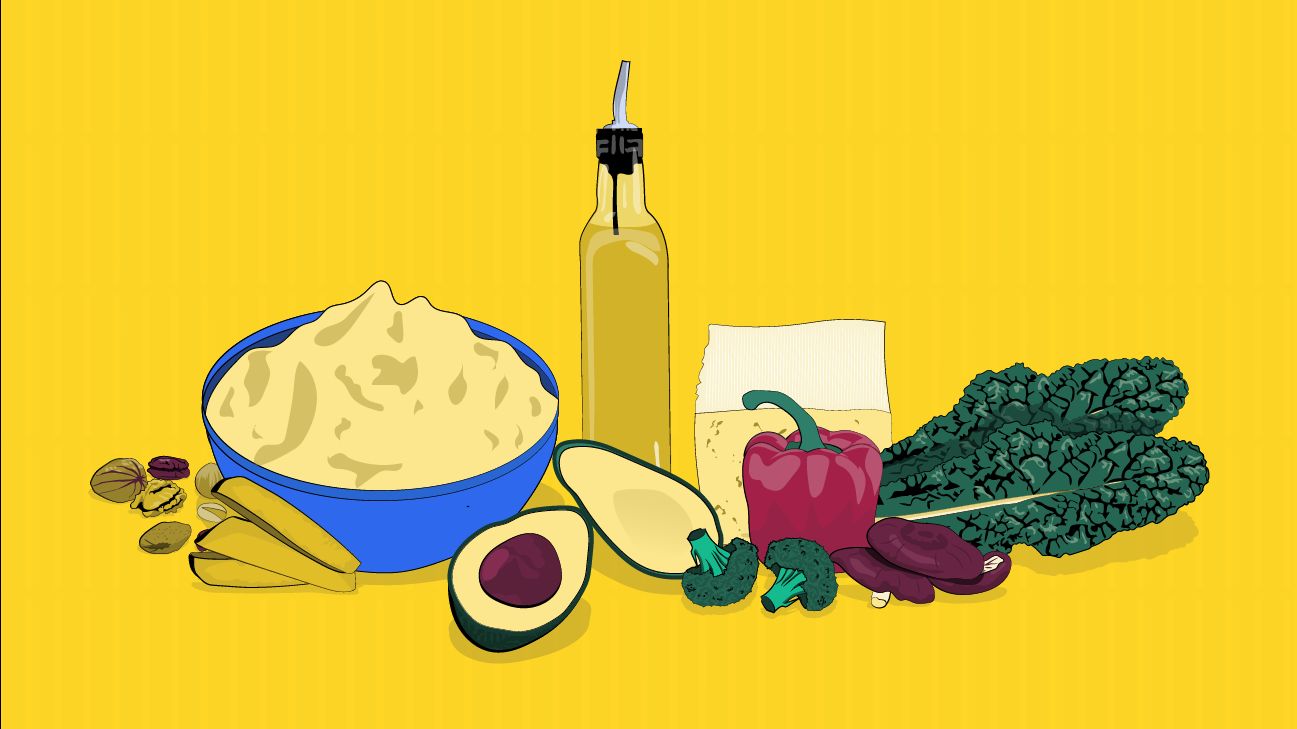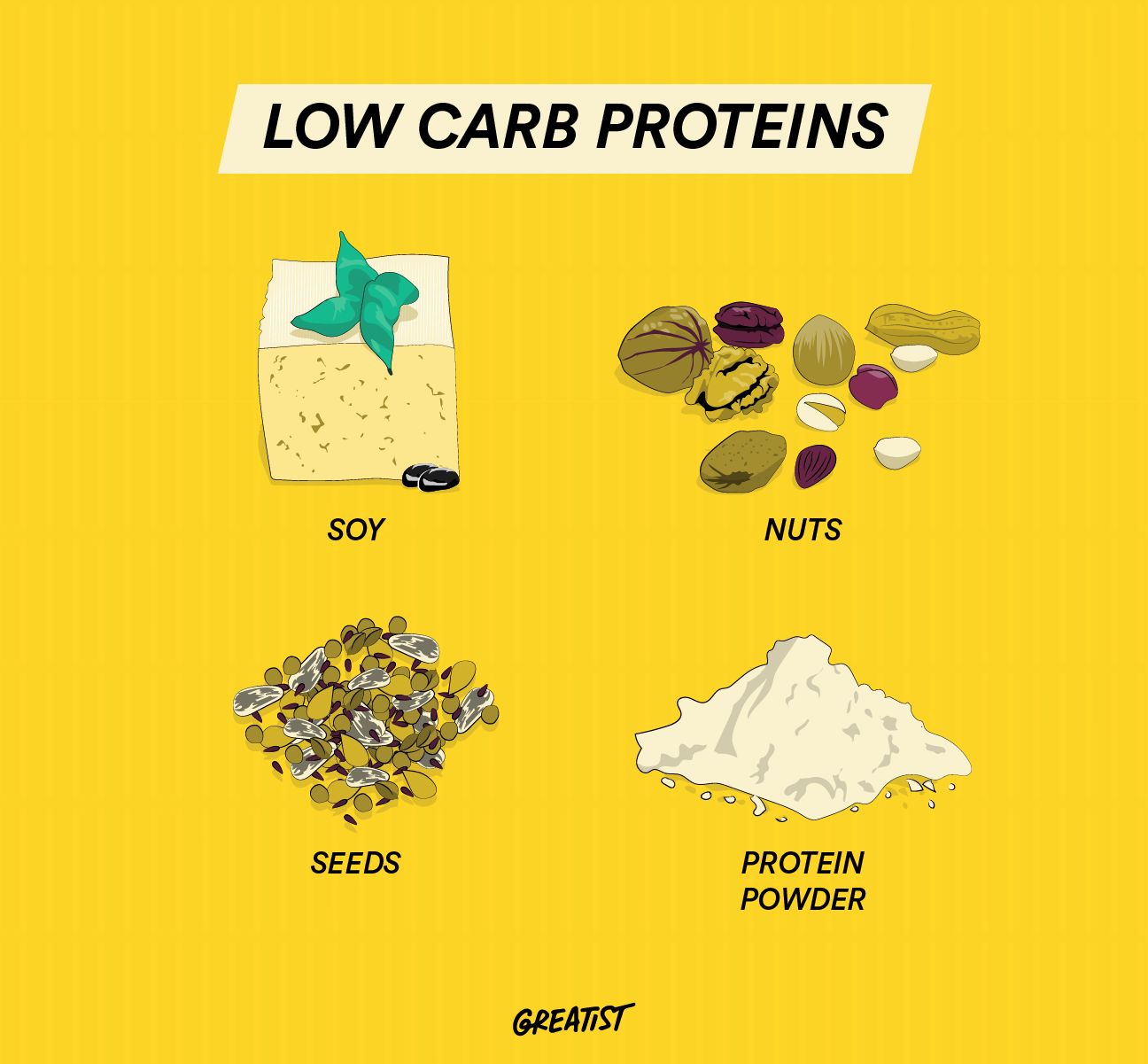
According to its many devotees, plant-based keto is a fantastic — although challenging — way to reap the benefits of two healthy, anti-inflammatory ways of eating.
It offers the best of both worlds: It’s plant-based without skimping on dietary fat (which is not the villain we once thought it was), AND it’s keto without being a total meat-and-cheese fest.
But the meal planning aspect can be pretty intimidating. With few (or no) animal products and no foods that are high in carbs or sugar… what exactly is left to eat? (Spoiler: Plenty.)
Here’s everything you need to know about meal planning for a plant-based keto diet.
Protein is an important consideration in any diet. It provides the amino acids your body needs to create new proteins. Research suggests that protein also helps keep you feeling full and may make weight loss or weight maintenance just a little easier.
There are nine essential amino acids we must get through our diet. Animal-based protein sources contain all nine in the correct ratios, but most plant proteins are short on one or two.
Because of this, you need to eat a variety of plant-based protein sources to make sure you’re getting enough.
A lot of the protein in standard vegan or vegetarian diets comes from grains and legumes, which are pretty carby. But there are several low carb proteins you can include in your diet:

- Soy: tofu, tempeh (fermented soy), black soybeans
- Nuts: almonds, walnuts, pecans, pistachios, cashews, hazelnuts, peanuts, nut butters
- Seeds: flaxseed, hemp seeds, hempeh (fermented hemp), chia seeds, sunflower seeds, pumpkin seeds, seed butters
- Protein powders: pea protein, hemp protein, soy protein
If you’re not strictly vegan, you may also choose to include eggs or dairy products, which are complete proteins.
For easy meal prep
Some plant-based meat alternatives are low enough in carbs for a plant-based keto diet, too, like JUST Egg and Beyond Meat (just be sure to check the label before buying).
On a keto diet — including plant-based keto — most of your calories should come from fat, since that’s what your body uses as fuel when you’re in ketosis. Don’t be afraid to add a little extra fat to everything you eat, especially since most plant-based proteins are pretty lean to begin with.
Fat can help keep you full and help your body absorb certain nutrients more efficiently.
Here are some ideal plant-based fats:
- Oils: coconut oil, olive oil, avocado oil
- Nuts: peanuts, almonds, pistachios, walnuts, pecans, hazelnuts, macadamia nuts, nut butters
- Seeds: flaxseed, chia seeds, hemp seeds, sunflower seeds, pumpkin seeds, seed butters
- Others: coconut cream, coconut butter, cocoa butter, avocado
For easy meal prep
If you don’t feel like dealing with finicky avocados (we don’t blame you), try Wholly Avocado. And check out Mother Raw for low carb, olive oil-based vegan salad dressings, sauces, and marinades.
A plant-based diet is typically naturally rich in grain foods like rice, oats, quinoa, pasta, and bread. There’s nothing wrong with that, of course, but it just doesn’t jibe with a keto diet.
However, if you’re used to eating a grain-heavy diet (plant-based or not), including some close substitutes can make sticking to a low carb diet much easier.
Here are some great alternatives for grains and other starchy carbs:
- Rice: cauliflower rice, konjac rice
- Oats: “noatmeal” made with seeds, almond flour, and coconut
- Pasta: zucchini noodles, konjac noodles
- Potatoes: jicama fries, roasted radishes, mashed cauliflower
- Flour: almond flour, coconut flour
- Bread: shiitake mushroom caps
No shocker here, but on plant-based keto you’re gonna be eating a LOT of vegetables. Because of this, the diet will naturally be a bit higher in carbs than an omnivorous keto diet, but most of it is from fiber, so it’s NBD.
But there are some higher-carb vegetables you’ll want to avoid to stay in ketosis, including potatoes, sweet potatoes, corn, and peas. (Side note: Meat substitutes and protein powders made from pea protein are usually fine.)
Veggies like carrots, tomatoes, and onions are relatively high in carbs but can still be included in your diet in moderate amounts.
Here’s a list of vegetables you can eat on plant-based keto. A note for beet lovers: Since a cup contains 17 grams of carbs, it’s one veggie you may want to enjoy in moderation. The other nonstarchy picks on the list can be eaten to your heart’s (and stomach’s) content!
- spinach
- kale
- salad greens
- broccoli
- cauliflower
- asparagus
- cucumber
- green beans
- celery
- brussels sprouts
- cabbage
- bell peppers
- jalapeño peppers
- mushrooms
- artichoke
- eggplant
- okra
- yellow squash
- zucchini
For easy meal prep
Try pre-assembled salads or salad kits, which are available at most grocery stores, or buy your veggies washed and precut.
You also need to be prepared for sweet cravings. Satisfying them can be as easy as munching on some low carb fruit (like strawberries or raspberries) or as involved as whipping up some vegan keto baked goods — which, FYI, will destroy your kitchen. The outcome is totally worth it, though.
Chia seed pudding is another great option, since the carbs in chia seeds are almost 100 percent from fiber and the chia seeds take on a perfect puddingy consistency in liquid.
Chia seed pudding
Combine 1 tablespoon of chia seeds, 1/2 cup of your favorite unsweetened plant-based milk, your favorite zero-calorie sweetener, and some additions like cocoa powder or berries. Let it chill and thicken in the fridge overnight and enjoy it cold or hot.
You can also make vegan fat bombs with coconut cream, coconut butter, or nut butters to satisfy your sweet tooth and deliver an easy dose of healthy fats.
For easy meal prep
Keep some frozen strawberries, stevia drops, and plant-based, low sugar yogurt cups (like Kite Hill plain or unsweetened plain) on hand for an easy sweet treat.
Aware of the growing demand for plant-based keto options, some companies have stepped up to the plate to offer convenient plant-based, low carb frozen and packaged foods.
Although they’re not full-on keto, Fresh n’ Lean and Vegin’ Out are meal delivery services that can deliver low carb vegan meals straight to your door. If you have a warehouse club membership, you can try Tattooed Chef frozen meals made with cauliflower — they’re plant-based and relatively low in carbs.
These options will be a bit more expensive than cooking all your meals from scratch (and they’ll be higher in carbs), but they’ll save you a ton of time, and they’re great for those nights when you just don’t feel like cooking.
It’s also possible to do plant-based keto when dining out, but it will be a bit more of a challenge. It’s easiest at restaurants that already cater to plant-based diets.
For example, here’s a vegan keto Chipotle order: a salad with sofritas (shredded tofu), no rice, no beans, fajita vegetables, and guacamole. This meal contains 13 grams of net carbs, which is pretty fantastic for a vegan keto meal at a restaurant. If you’re not strictly vegan, you can add cheese or sour cream to boost the calorie and fat content.
Here’s an easy formula you can use to build a variety of plant-based keto meals: 3 ounces of protein + 1 tablespoon of fat + 1/2 cup (or 1 piece) of grain substitute + 1 cup vegetables.
Or you can skip the grain substitute and just go for an extra-hefty dose of veggies (since most grain subs are vegetable-based anyway).
Here are some sample meals that follow this formula:
- grilled tofu kebabs with peppers, purple onion, and mushrooms and a green salad with olive oil vinaigrette
- plant-based ground beef alternative with homemade spaghetti sauce (containing tomatoes, bell pepper, onion, and spinach) and zucchini noodles cooked in avocado oil
- taco bowl with taco-seasoned black soybeans, cauliflower rice, lettuce, tomato, and avocado
- stuffed shiitake mushroom cap (with sautéed plant-based meat shreds or tofu, peppers, and onions), topped with plant-based cheese, and oil-roasted green beans
- protein shake with 1 scoop of pea protein powder, strawberries, unsweetened almond milk, spinach, and avocado
If you’re thinking about trying plant-based keto, there’s no need to feel overwhelmed or intimidated by the diet. There are plenty of food options and tons of ways to streamline your meal planning and prep.
But keep in mind that a plant-based keto diet isn’t the best choice for everyone. It may not be right for you if you:
- are an athlete
- have certain medical conditions
- are pregnant or breastfeeding
- have a history of disordered eating
Before starting this or any new eating plan, talk with your healthcare provider to make sure it’s safe for you and to find out if you could benefit from taking any supplements while on the diet to make sure you get all the nutrients you need.

